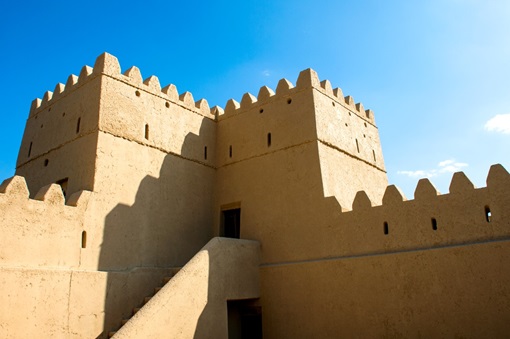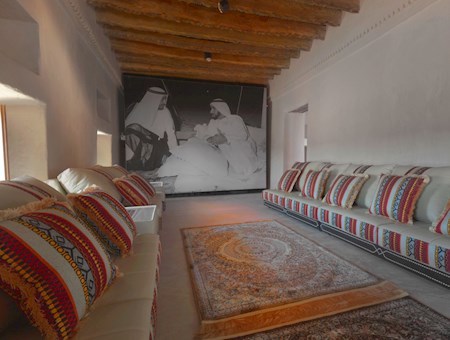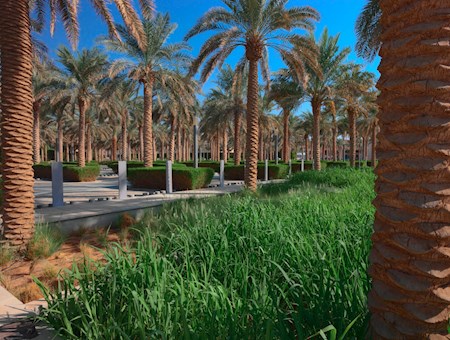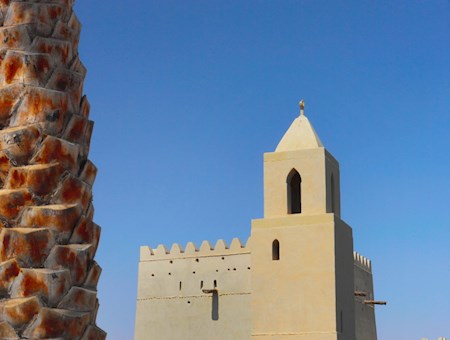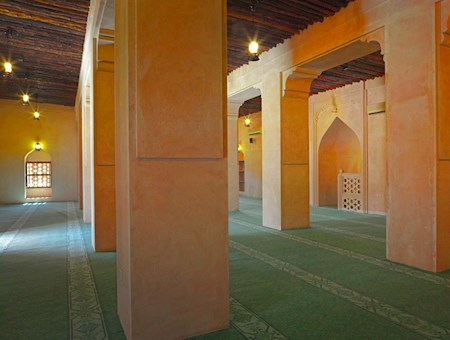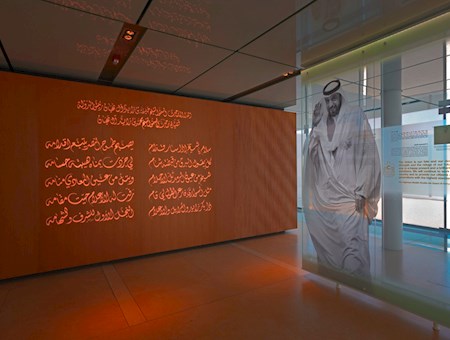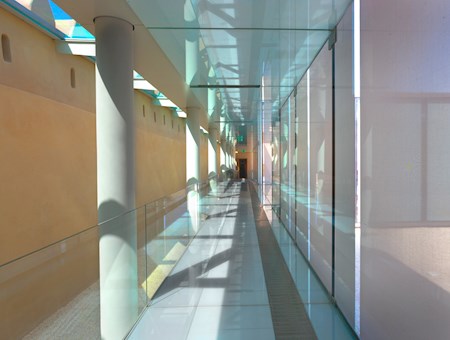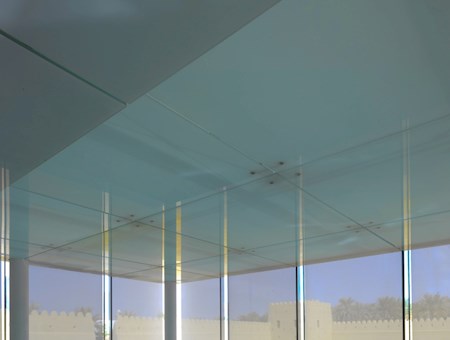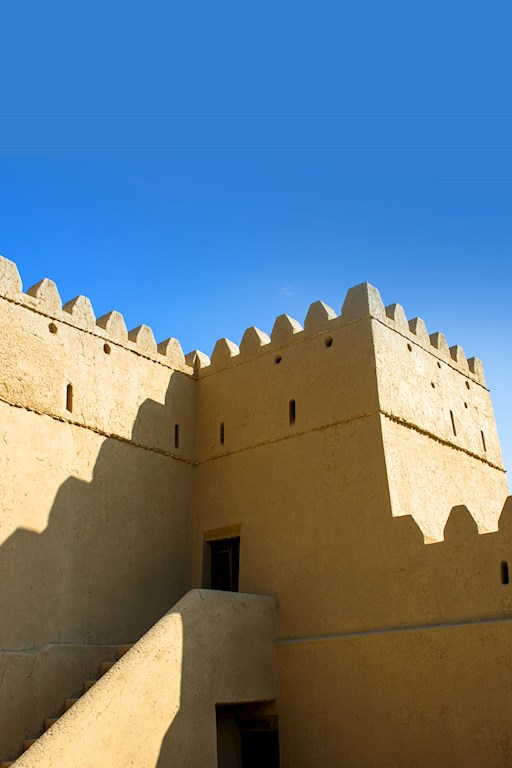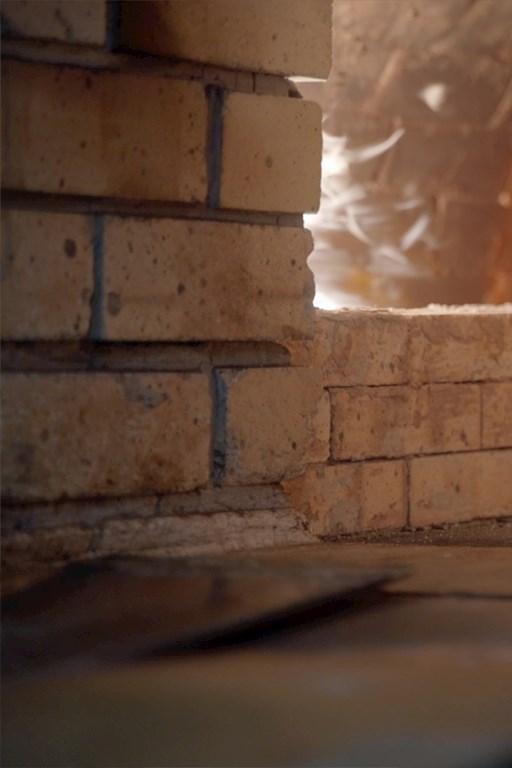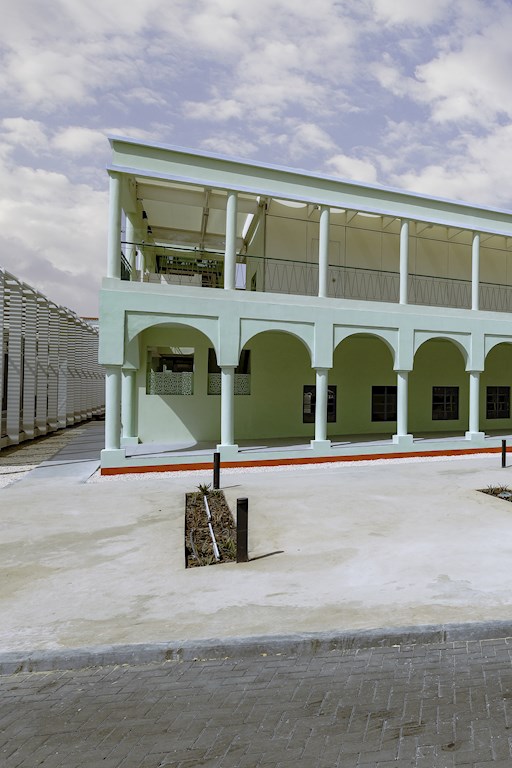The building has always presented a simple but striking form: a square enclosure with projecting corner towers and a grand entrance gate. It was used as a
diwan (a council or seat of governance) and as a place for the community to congregate.
Sheikh Zayed bin Sultan Al Nahyan made many additions to the fort, reflecting its growing importance as the place of government in the region and as the location for discussions, the reception of visitors, deliberations and decision making. He added new diwan buildings and kitchens and expanded the guest accommodation to cater for the increasing number of visitors.
The fort’s mosque was also enlarged, and Qasr Al Muwaiji’s significance as a focus for the community increased as people came there to gather, pray and celebrate. When Sheikh Zayed bin Sultan al Nahyan became Ruler of Abu Dhabi in 1966, both he and his son, Sheikh Khalifa bin Zayed Al Nahyan, moved to Abu Dhabi. Starting in the 1970s, the compound underwent several phases of restoration, culminating in a major regeneration project that has again made Qasr Al Muwaiji an important public space in Al Ain.
The exhibition
An exhibition hall, housed in a glass-walled space within the courtyard of Qasr Al Muwaiji, has been built to tell the story of the fort and its inhabitants, with a focus on the late H.H. Sheikh Khalifa bin Zayed Al Nahyan.
The exhibition sets out the chronology of the members of Abu Dhabi’s Ruling Family with a connection to Qasr Al Muwaiji but, above all, it highlights the accomplishments of Sheikh Khalifa bin Zayed Al Nahyan. The exhibition also traces the history of Qasr Al Muwaiji from the earliest archaeological evidence through to today, and also its role in hosting visiting travellers. The displays also explain the importance of water to life in Al Ain and the oases, such as the nearby Muwaiji Oasis.
The oasis
Muwaiji Oasis is the smallest oasis in Al Ain and contains approximately 21,000 palm trees, as well as a
falaj irrigation system that uses ground-level and underground water canals to bring water from the nearby mountains. The grounds of the fort have been used over the years for date palm cultivation.
CULTURAL SITES TICKETS





